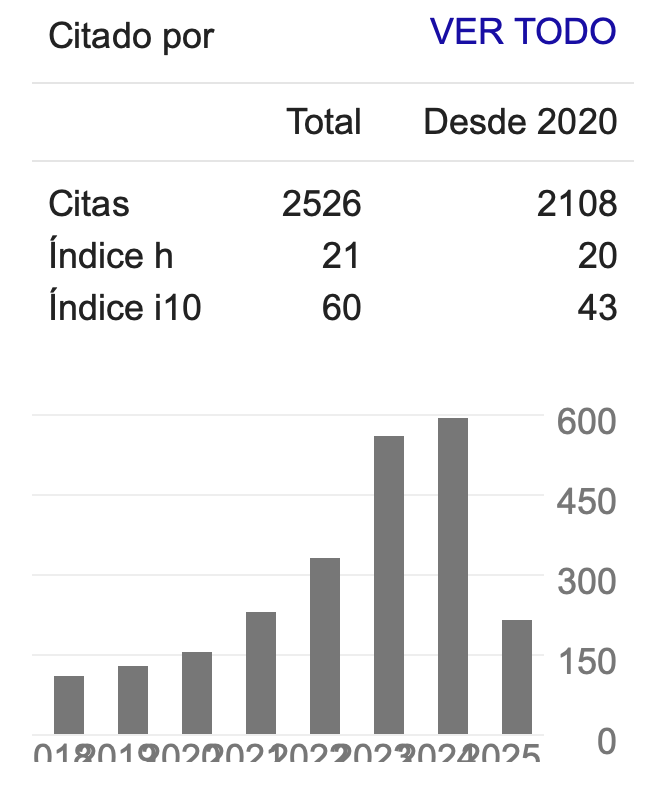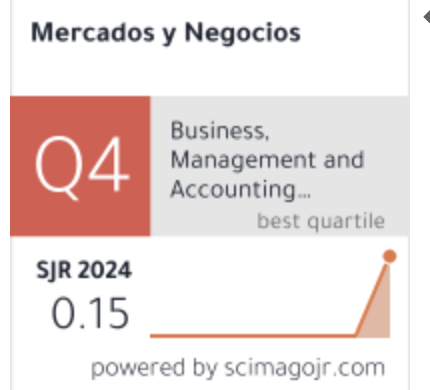Femvertising and its impact on psychological reactance and purchase intention of Mexican female consumers
DOI:
https://doi.org/10.32870/myn.vi49.7694Palabras clave:
Femvertising, gender, advertising, purchase intention, psychological reactanceResumen
This work focuses on the study of the femvertising advertising strategy. It references the feminist theories and the theory of psychological reactance to understand the impact of femvertising on Mexican female consumers' psychological reactance and purchase intention. A mixed methodology was applied, with a content analysis and a reception questionnaire (N=666) to Mexican female consumers. The results show a higher purchase intention and a lower psychological reactance in female consumers to femvertising spots. The main conclusion is that the implementation of the femvertising strategy in advertising spots aimed at Mexican women produces an increase in their purchase intention and a decrease in psychological reactance compared to conventional (non-femvertising) ads because femvertising generates a greater identification of the consumers with the ad by projecting the woman in a more authentic and close way.Citas
Abreu, R. (2016). Femvertising: empowering women through the hashtag? A comparative analysis of consumers’ reaction to feminist advertising on twitter [Tesis de maestría, Universidade de Lisboa].
Ajzen, I., & Fishbein, Martin. (1980). Understanding attitudes and predicting social behaviors. Prentice-Hall.
Åkestam, N., Rosengren, S., & Dahlen, M. (2017). Advertising “like a girl”: Toward a better understanding of “femvertising” and its effects. Psychology & Marketing, 34(8), 795–806. https://doi.org/10.1002/mar.21023
Añaños, E. (2011). Comunicació publicitària no convencional a la TV: Reactància psicològica o persuasió? . Revista de Recerca i d’Anàlisi Societat Catalana de Comunicació, 28(2), 129–148. https://doi.org/https://doi.org/10.2436/20.3008.01.88
Banet‐Weiser, S. (2004). Girls rule!: gender, feminism, and nickelodeon. Critical Studies in Media Communication, 21(2), 119–139. https://doi.org/10.1080/07393180410001688038
Becker-Herby, E. (2016). The Rise of Femvertising: Authentically Reaching Female Consumers. University of Minnesota.
Bowling, A. (2005). Measuring health: a review of quality of life measurement scales. Open University Press.
Brehm, J. (1966). A theory of Psychological Reactance. New York: Academic Press.
Carrillo, E. (2016). Femvertising: Publicidad con enfoque de empoderamiento. XXI Congreso Internacional de Contaduría, Administración e Informática.
Case, L. (2019). From Femininity to Feminism: A Visual Analysis of Advertisements Before and After the Femvertising Movement. Elon Journal of Undergraduate Research in Communications, 10(2), 35-45.
Castillo, M. (2014). These stats prove femvertising works. Adweek.Com. Link: http://www.adweek.com/news/technology/these-stats-prove-femvertising-works-160704
Ceballos, N. (2018). Ver, oír y opinar: Valoracion de la publicidad sexista por parte de los adolescentes [Tesis de licenciatura, Universidad Autónoma de Barcelona].
Cevallos, D. (2018). Fases del proceso de recuperación de adicciones y tipo de Reactancia Psicológica en pacientes drogodependientes y alcohol dependientes en centros de rehabilitación de la ciudad de quito, en el año 2018 [Universidad Indoamérica].
Chu, C., & Lu, H. (2007). Factors influencing online music purchase intention in Taiwan: An empirical study based on the value-intention framework. Internet Research, 17(2), 139–155. https://doi.org/10.1108/10662240710737004
Cohen, J. (1992). Quantitative Methods in Psychology: A power primer. Psychological Bulletin, 112(1), 155–159. https://doi.org/10.1037/0033-2909.112.1.155
Condon, J. (2015). Being “Like A Girl” in the Twenty-First Century: Branding and Identity Through Cultural Conversation [Tesis de licenciatura, Claremont College].
Crosno, J., Freling, T., & Skinner, S. (2009). Does brand social power mean market might? Exploring the influence of brand social power on brand evaluations. Psychology & Marketing, 26(2), 91–121. https://doi.org/10.1002/mar.20263
Dodds, W., Monroe, K., & Grewal, D. (1991). Effects of Price, Brand, and Store Information on Buyers’ Product Evaluations. Journal of Marketing Research, 28(3), 307–319. https://doi.org/10.2307/3172866
Drake, V. (2017). The Impact of Female Empowerment in Advertising (Femvertising). Journal of Research in Marketing, 7(3), 593–599. https://doi.org/https://doi.org/10.17722/jorm.v7i3.718
Edwards, S., Li, H., & Lee, J. (2002). Forced Exposure and Psychological Reactance: Antecedents and Consequences of the Perceived Intrusiveness of Pop-Up Ads. Journal of Advertising, 31(3), 95–107. https://doi.org/10.1080/00913367.2002.10673678
Galvis, R. (2017). La publicidad con mensaje estereotipado: análisis de efecto de la imagen de marca y la Intención de Compra, un estudio en universitarios [Tesis de maestría]. Universidad de Guadalajara.
Gamba, S. (2008). Feminismo: historia y corrientes. Diccionario de estudios de género y Feminismos. Buenos Aires: Editorial Biblos.
García, C. (2005). Representaciones de la mujer en la publicidad mexicana. Revista científica de información y comunicación, (2), 43-54.
García, M. F., & López-Paredes, M. (2019). El Femvertising como estrategia de Comunicación y su impacto en mujeres entre 25 y 35 años en la ciudad de Quito – Ecuador. ComHumanitas: Revista Científica de Comunicación, 10(2), 174–192. https://doi.org/10.31207/rch.v10i2.202
García, M. (2018). Una ola feminista recorre el mundo. In E. U. Bosia (Ed.), La Cuarta Ola feminista (15–24).
Gill, R. (2008). Commodity Feminism. Londres: The International Encyclopedia of Communication.
Goldman, R. (1992). Reading Ads Socially. London: Routledge.
Goldman, R., Heath, D., & Smit, S. (1991). Commodity Feminism. Critical Studies in Mass Communication, 8(3), 333-351. https://doi.org/10.1080/15295039109366801
Guamán, L. (2013). Poder masculino, derechos de las mujeres e imagen femenina en la publicidad. Punto Cero, 18 (27), 53-60.
Halling, A., & Netterman, R. (2017). #Femvertising Hur olika reklambudskap påverkar den kvinnliga konsumentens kundlojalitet [Tesis de licenciatura, Örebro University School of Business.].
Jalakas, L. (2016). The Ambivalence of Femvertising: Exploring the Meeting between Feminism and Advertising through the Audience Lens. Lund University.
Júdez, S., & Cernuda, G. (2014). La publicidad se ha olvidado de las mujeres, pero nos vengaremos. Marketingdirecto. Link:_https://www.marketingdirecto.com/marketing-general/eventos-y-formacion/s-judez-y-g-cernuda-en-lalluna2014-la-publicidad-se-ha-olvidado-de-las-mujeres-pero-nos-vengaremos /amp
Karulkar, Y., Arya, S., Gujral, S., Sharma, A., & Pokharna, M. (2019). Does femvertising matter? A study in the Indian context. International Journal of Research and Analytical Reviews, 6(1), 815–825.
Kim, E., & Kim, Y. (2004). Predicting online purchase intentions for clothing products. European Journal of Marketing, 38(7), 883–897. https://doi.org/10.1108/03090560410539302
Kotler, P. & Armstrong, G. (2013). Fundamentos de marketing. México. Pearson educación.
López, R., Avello, R., Palmero, D., Sánchez, S., & Quintana, M. (2019). Validación de instrumentos como garantía de la credibilidad en las investigaciones científicas. Revista Cubana de Medicina Militar, 48(2(Sup)), 441–450.
Maram, L. (2017). Cómo hacer publicidad para mujeres. Estudio. Luis Maram.
Menéndez, M. (2019a). Entre la cooptación y la resistencia: de la Femvertising a la Publicidad Profem. Recerca. Revista de Pensament i Anàlisi., 24(2), 15–38. https://doi.org/10.6035/Recerca.2019.24.2.2
Menéndez, M. (2019b). ¿Puede la publicidad ser feminista? Ambivalencia e intereses de género en la femvertising a partir de un estudio de caso: Deliciosa Calma de Campofrío. Revista de Estudios Sociales, 68, 88–100. https://doi.org/10.7440/res68.2019.08
Mirabi, V., Akbariyeh, H. & Tahmasebifard, H. (2015). A Study of factors affecting on customers purchase intention. Case study: the agencies of Bono Brand Tile in Tehran. Journal of Multidisciplinary Engineering Science and Technology, 2(1), 267-273.
Mora, L. (2018). Femvertising. La sinceridad en la publicidad feminista. Media digitali e genere, 1-18.
Morwitz, V. G., & Schmittlein, D. (1992). Using Segmentation to Improve Sales Forecasts Based on Purchase Intent: Which “Intenders” Actually Buy? Journal of Marketing Research, 29(4), 391–405. https://doi.org/10.2307/3172706
Moyer-Gusé, E., & Nabi, R. L. (2010). Explaining the Effects of Narrative in an Entertainment Television Program: Overcoming Resistance to Persuasion. Human Communication Research, 36(1), 26–52. https://doi.org/10.1111/j.1468-2958.2009.01367.x
Muriel, C. (2018). ¿Qués es un spot publicitario y que tipos hay? Digitalisthub. Link: https://digitalisthub.com/que-es-un-spot-publicitario-y-que-tipos-hay/
Navarro, M., & Martín, M. (2011). El sexismo publicitario: delimitación de conceptos e indicadores de género. Estudio empírico de la producción científica. Pensar La Publicidad. Revista Internacional de Investigaciones Publicitarias, 5(1), 51–73. https://doi.org/10.5209/rev_PEPU.2011.v5.n1.36922
Ortega, E. (1997). La comunicación publicitaria. Madrid, España: Pirámide.
Porroche-Escudero, A. (2017). Análisis crítico de las campañas de prevención del cáncer de mama. En A. Porroche-Escudero, G. Coll-Planas y C. Riba (eds.), Cicatrices (in)visibles. Perspectivas feministas sobre el cáncer de mama. Athenea Digital, 17(2), 57–69.
Prakash, V. (1992). Sex roles and advertising preferences. Journal of Advertising Research, 32(3), 43–52.
Puromarketing. (2010). 10 errores en el marketing dirigido para mujeres. La mayoría de las mujeres no se sienten identificadas con las marcas que no la representan de una manera realista u creíble. Madrid, España: Puro marketing. Link: https://www.puromarketing.com/44/8167/errores-marketing-dirigido-para-mujeres
Quick, B., & Stephenson, M. (2008). Examining the Role of Trait Reactance and Sensation Seeking on Perceived Threat, State Reactance, and Reactance Restoration. Human Communication Research, 34(3), 448–476. https://doi.org/10.1111/j.1468-2958.2008.00328.x
Rimbaud, D. (2013). Estereotipos femeninos presentados en la publicidad. Interludio, 1, 1-21.
Rodríguez, L. (2016). Estudio de la influencia de la publicidad de productos de alimentación basada en la imagen corporal en los adolescentes [Tesis doctoral, Universitat Autònoma de Barcelona].
SheKnows Media. (2016). Femvertising Awards. SheKnows Media
SHE Media. (2020). SHE Media celebra la quinta edición annual de los premios #Femvertising. New York: SHE Media. Link: https://www.shemedia.com/she-media-marks-the-fifth-annual-femvertising-awards
Sherman, L. (2017). How some advertisers are secretly working to make us less prejudiced. Ginebra, Suiza: World Economic Forum.
Sirr, M. (2015). Representations of Gender and Power within Luxury Goods Advertising: Generating Marginalisation of Women. Journal of Promotional Communications, 32(2), 285–294.
Stanojlovic, M. (2015). Reactancia Psicológica en campañas de prevención de alcohol en jóvenes universitarios: el papel del realismo narrativo y la auto-afirmación del receptor [Tesis doctoral, Universidad Complutense de Madrid].
Sternadori, M. & Abitbol, A. (2019). Support for women’s rights and feminist self-identification as antecedents of attitude toward femvertising. Journal of Consumer Marketing, 36(6), 740-750. https://doi.org/10.1108/JCM-05-2018-2661
Teng, F., Hu, J., Chen, Z., Poon, K.-T., & Bai, Y. (2021). Sexism and the Effectiveness of Femvertising in China: A Corporate Social Responsibility Perspective. Sex Roles, 84(5–6), 253–270. https://doi.org/10.1007/s11199-020-01164-8
Vahdati, H. & Mousavi, S. (2016). Brand personality toward customer purchase intention: the intermediate role of electronic word-of-mouth and brand equity. Asian Academy of Management Journal, 21(2), 1-26. http://dx.doi.org/10.21315/aamj2016.21.2.1
Villarroel, Y. (2007). Los aportes de las Teorías Feministas a la comprensión de las relaciones internacionales. Revista de Ciencias Políticas, Politeia, 30(39), 65-86.
Descargas
Publicado
Cómo citar
Número
Sección
Licencia
Derechos de autor 2023 Silvia Hernández Willoughby, Patricia Lázaro Pernias

Esta obra está bajo una licencia internacional Creative Commons Atribución-NoComercial 4.0.
Mercados y Negocios por Departamento Mercadotecnia y Negocios Internacionales. Universidad de Guadalajara se distribuye bajo una Licencia Creative Commons Atribución-NoComercial 4.0 Internacional.
Basada en una obra en http://revistascientificas.udg.mx/index.php/MYN/.
Los autores conservan los derechos de autor.








